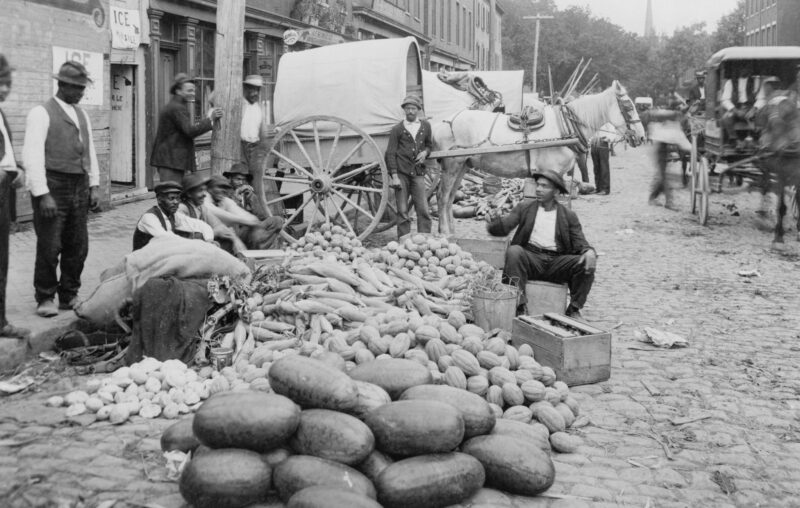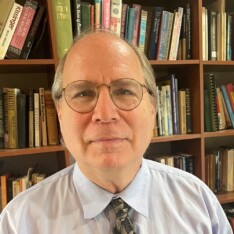How Little Mound Bayou Became a Powerful Engine for African American Civil Rights and Economic Advancement

It is fair to say that no other small town has contributed so much to advancing human freedom in the United States during the twentieth century than Mound Bayou, Mississippi. Had that little community not existed, such civil rights icons as Medgar Evers, Fannie Lou Hamer, and Rosa Parks might have remained invisible to history.
The town was founded in 1887 by Isaiah T. Montgomery and Benjamin T. Green, two cousins who had once been enslaved by Joseph Davis, the brother of Confederate president Jefferson Davis. It eventually was the only place in Mississippi where African Americans exercised genuine free speech and assembly rights, voted, and held office. Mound Bayou’s embrace of equal political rights also created a secure base to spread these values throughout the rest of the state and beyond.
The original pioneers set the tone from the outset. Montgomery never tired of reminding everyone, as a local citizen recalled many years later, that when he and Green “founded Mound Bayou it was the worst howling wilderness. And he [Montgomery] told us why he came to Mound Bayou and how he established this community in order that Negroes may have the freedom of expression and freedom to live and earn a livelihood.”
But, as Montgomery and Green understood only too well, a precondition for the survival of Mound Bayou was a political environment which nurtured entrepreneurship and the rule of law. Many African Americans carefully kept track of events in the town, seeing it as a test case for Booker T. Washington’s theory that a prerequisite for political rights was the slow accumulation of economic power. Washington himself took a special interest in the community.
By the second decade of the twentieth century, Mound Bayou’s population had mushroomed and it had thirteen stores, several small shops, a sawmill, three cotton mills, the leading black-owned bank in Mississippi, and ten churches. There was also a privately maintained high school of two hundred pupils, a rarity for African Americans anywhere in the country. The lone example of a white controlled institution was the local Carnegie Library, which had only come about because of a personal request from Booker T. Washington to Andrew Carnegie. Black organizations throughout the state often had their conferences in the town which offered safety from racist curfews and other police harassment.
African Americans throughout the United States celebrated the Mound Bayou freedom model even as Jim Crow was becoming more entrenched. Prominent whites were starting to notice it too. In 1908, President Theodore Roosevelt ordered his train to make a special stop in the town. From the platform, he proclaimed that he was witnessing “an object lesson full of hope for the colored people and therefore full of hope for the white people, too.” Four years later, Washington, in a speech to a crowd of thousands, hailed Mound Bayou as a “place where a Negro may get inspiration by seeing what other members of his race have accomplished…[and] where he has an opportunity to learn some of the fundamental duties and responsibilities of social and civic life.”
The period after World War I, however, brought plummeting cotton prices, destructive fires, and violent civil strife which threatened the survival of the struggling town. No one was more essential in keeping Mound Bayou alive during these dark years than Mayor Benjamin A. Green, the son of the town’s co-founder Benjamin T. Green. Though he had a Harvard law degree, Green had returned to the community where he was to serve as mayor from 1919 until his death in 1960. Green was a committed, but also realistic, evangelist for Mound Bayou’s historical importance as an inspirational model. His diplomatic skills proved critical in heading off external threats from hostile whites and keeping the peace internally.
A hallmark of Green’s long tenure was an informal system of adjudication, negotiation, and consensus to control crime and resolve disputes. “The only rowdyism of any consequence ever known in or about the place,” one local citizen commented during the 1920s, “was caused by some poor whites coming to Mound Bayou on a Fourth of July picnic and getting drunk on whisky they had brought with them. There is not a loafer or vagrant in our town.” Crime was so low that the town closed its only jail in 1929 as “a useless and unnecessary institution.”
The arrival of the resourceful and dynamic Dr. T.R.M. Howard in 1942 to become chief surgeon of the new all-black Taborian Hospital gave the community, and its founding ideals, a new burst of energy. The hospital was the brainchild of P.M. Smith, chief grand mentor of the Knights and Daughters of Tabor, a mutual aid organization. Even by the standards of the time or, for that matter, later times, the services at the then state-of-the-art facility were a bargain. Annual dues of $8.40 ($144 in 2023) entitled a member to thirty-one days of hospitalization, including major or minor surgery. Mayor Green used the opening ceremony as an opportunity to boast about the accomplishments “of this law-abiding, God-fearing and jail-less city, an All-Negro city if you please, where you can sense freedom and safety as nowhere else in the mid-South.”
The lure of the hospital spurred rapid expansion of the membership of the Knights and Daughters of Tabor to nearly fifty thousand. Women were in the majority, and the two most prevalent occupations were sharecroppers and farm laborers. Although the members came from an impoverished base, they were able to provide for their social welfare needs without any governmental aid by pooling their resources.
Using the hospital as a springboard, Howard established a farm of one thousand acres, the first swimming pool for African Americans in the state, a home construction firm, a small zoo, a high-class restaurant, and a community-entertainment center which attracted visitors from miles around. Howard urged African Americans to stay in Mississippi and improve conditions, rather than flee to the North, declaring that there “is nothing wrong with Mississippi that hard work, an improved educational system, a practical application of the religion of Jesus Christ, and real Jeffersonian democracy cannot solve.” He stressed that this “little town has a symbolism for many Negroes. I would like it to be symbolic for many more.”
During the 1950s, Mound Bayou’s economic revival enabled both Howard and other citizens to move ever more boldly to challenge the racist status quo. Long before Rosa Parks and Martin Luther King Jr. came on the scene, Mound Bayou became a center of opposition to both disenfranchisement and segregation. This new, and increasingly risky, political assertiveness, however, would not have been possible without the firm foundation of self-help and entrepreneurship laid by Mound Bayou’s founders.










